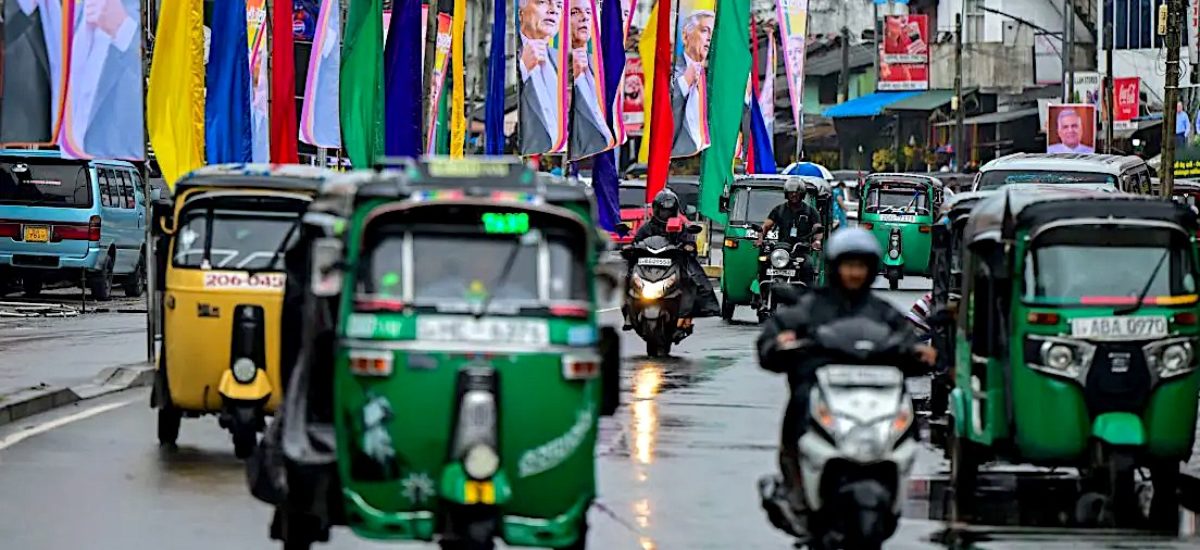Photo courtesy of The Star
With nominations for the September 21 presidential elections now completed, a survey of the political landscape provides an interesting picture. A record 39 candidates are in the fray but most of them would be also rans. In this year’s election, there are three main candidates with a couple of other interesting side shows. In the last presidential election of 2019, the three main candidates polled 97% between them while the balance 32 candidates shared 3% of the vote between them.
For any government to win reelection to office, it needs to retain the support of the social forces which propelled it into power in the first place. Post the aragalaya protest movement and the fleeing away of Gotabaya Rajapaksa in 2022, its successor was a coalition between Ranil Wickremesinghe and the Rajapaksa’s SLPP, specifically the SLPP’s parliamentary majority. It is a successor administration that is only now going before the people seeking a mandate, constitutionally not having needed to do so in 2022. However it is doing so after the ruling coalition broke apart. The political marriage of convenience between Ranil Wickremesinghe and the Rajapaksas is now officially over.
As nominations closed, the Rajapaksas and the SLPP have nominated their own candidate. The original plan was for a stop gap standard bearer, or as a night watchman in cricketing terms, to carry the SLPP flag during this election and business tycoon and SLPP MP Dhammika Perera was chosen. However, that was not to be. Accordingly the scion of the Rajapaksa political dynasty, Hambanthota District parliamentarian and former Thomian rugby captain Namal Rajapaksa, steps out of his father’s shadow in a national coming out party this presidential election. The country would be able to get a good look at the next generation Rajapaksa being groomed to take over leadership of the family’s political fortunes. However post 2022, once senses a public weariness with and a rejection of the Rajapaksa politics and if public polling and opinion surveys are to be relied on, the young Rajapaksa should garner in the high single digits of the popular vote; an interesting side show to the real contest. President Ranil Wickremesinghe, on the other hand, without his SLPP coalition partner is now an independent candidate trying to cobble up a coalition of the willing without a real grassroots network. A broken ruling coalition is seeking election in its two constituent parts.
Sri Lanka has always had a basic two party system or a contestation for power between two major political groupings whatever names or forms they may take or adopt, with a strong leftist component, as a third distinct political entity. For the early part of post independent history these two forces were the UNP and the SLFP, with the left being represented by the LSSP and the CP. With elections being switched over to a proportional representation system, parties became more like alliances. The 2015 election, which brought an SLFP/UNP coalition under President Sirisena and Ranil Wickremesinghe, demonstrated that the political space created by the two major parties coming together resulted not in a one party state but in the capture of the opposition space by the Rajapaksas who lost the 2015 election through their new party the SLPP that swept to power in 2019.
Leading the opposition to the Rajapaksas and the ruling Wickremesinghe Administration is the SJB of opposition leader Sajith Premadasa. Having formed a broader umbrella of a Samagi Jana Sandanaya or alliance, the SJB seems the broadest based alliance seeking to come into government office through the election of Sajith Premadasa as president. The SJB according to its public pronouncements has crafted a largely centrist position on most issues, capturing the middle ground between the business as usual of President Ranil Wickremesinghe and the system change of the JVP/NPP.
The political left now dominated by the JVP is led by its most effective standard bearer ever in post independent Sri Lanka, MP Anura Kumara Dissanayake. The JVP and its leader saw a surge in support in the aftermath of the aragalaya as the ethos of the system change caught currency and received public support. But two years on and as the voting public takes a good hard look at whether they prefer a system change or deep reforms, the balance seems to moving more towards the formal opposition of the SJB rather than the political left represented by the JVP/NPP. To complicate matters for the JVP/NPP, the founder and head of a leading media conglomerate, Dilith Jayaweera, is contesting as the candidate of the Sri Lanka Communist Party backed by a group of the more majoritarian ethnic nationalist MPs.
This is a further splintering of the political forces that came together in backing the SLPP in 2019 and, with the political discrediting of the Rajapaksas in 2019, the ethnic nationalism that was a mainstay of their politics is also largely discredited. Dilith Jayaweera will likely contest Namal Rajapaksa to be a significant also ran but in the low single digits. The real presidential election contest is between the incumbent president Ranil Wickremesinghe, the opposition leader Sajith Premadasa and the leftist leader Anura Kumara Dissanayake. The sovereign people of Sri Lanka will decide on September 21 as to who should shape our common destiny and steward the journey for the next five years.

